Media
This is a gallery of images from the 2014 field season on Digermul Peninsula, Finnmark, Norway. Check out our photographs of this amazing place.
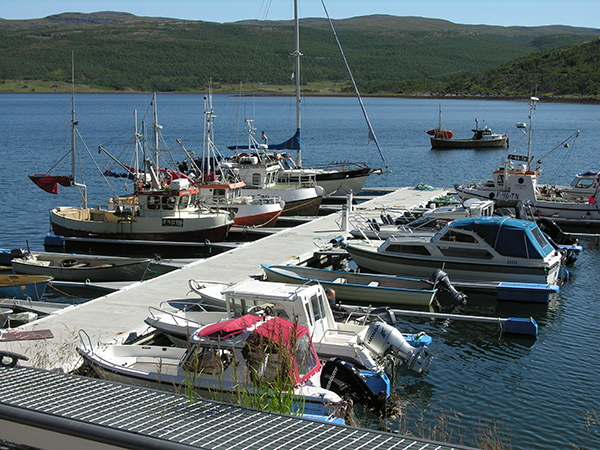
Our starting point at Sjursjokk harbor on Tanafjord.

Heading out to the Digermul Peninsula from the harbour at Sjursjokk.
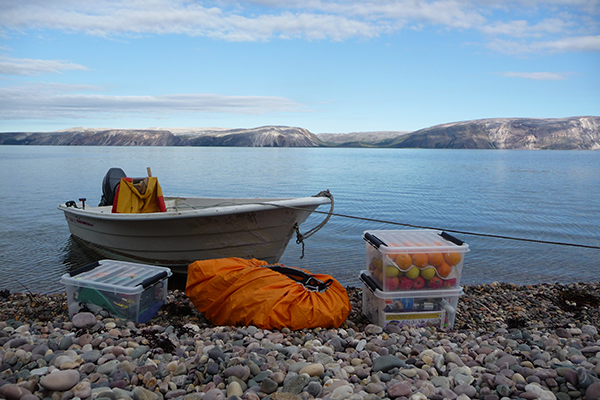
Arrival at Breidvika valley, one of our main study locations on the eastern shore of the Digermul Peninsula.
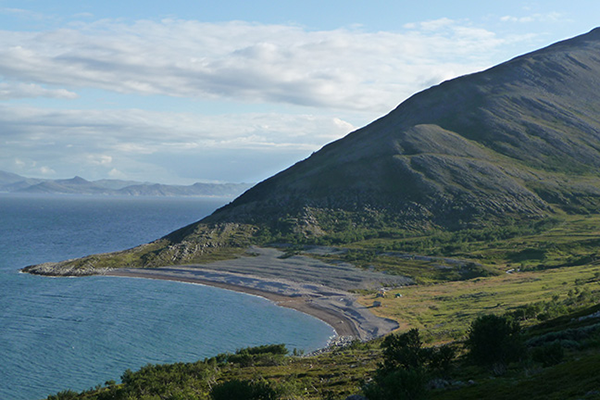
Looking down at Breidvika base camp from the north.
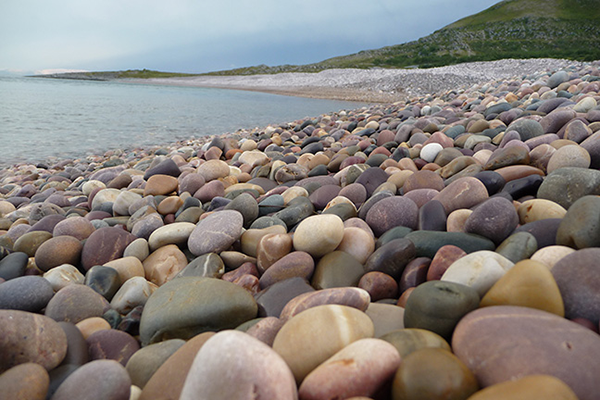
Quartzite pebbles on the beach at Breidvika, coloration of the pebbles reflecting the large variation in coloration of the Lower to Middle Cambrian quartzite beds, ranging from white to black.

Icy cold stream at Breidvika campsite also functioning as our cooler for fresh food.
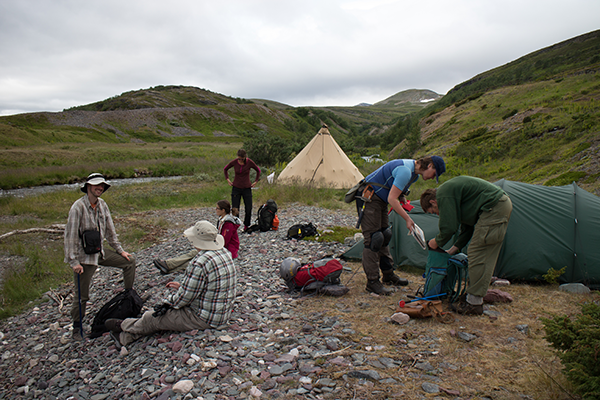
Morning preparations for field work at the Breidvika base camp.

Settling in for dinner in our kitchen tent - a beautiful Sami lavu.

Dr. Jan Ove R. Ebbestad in front of one of the Lower Cambrian sections featuring prominet quartzite beds, with a major white quartzite on top of the section.
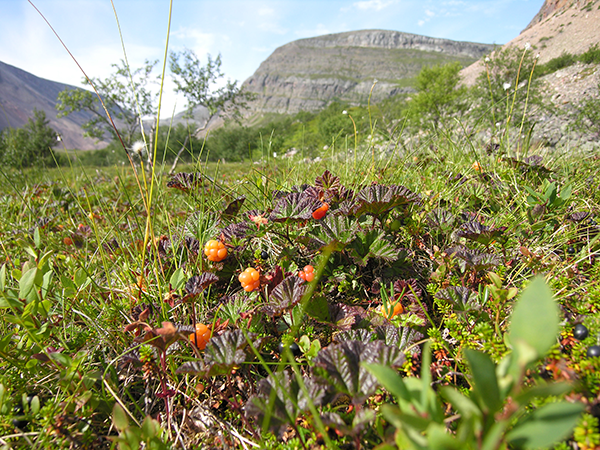
Cloud berries ready to be picked in Breidvika valley!
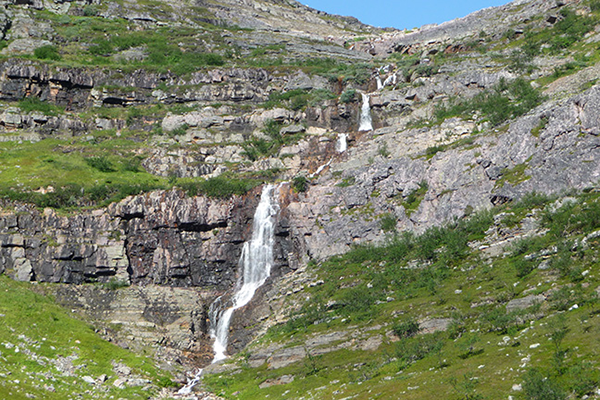
One of five major waterfalls in Breidvika valley.
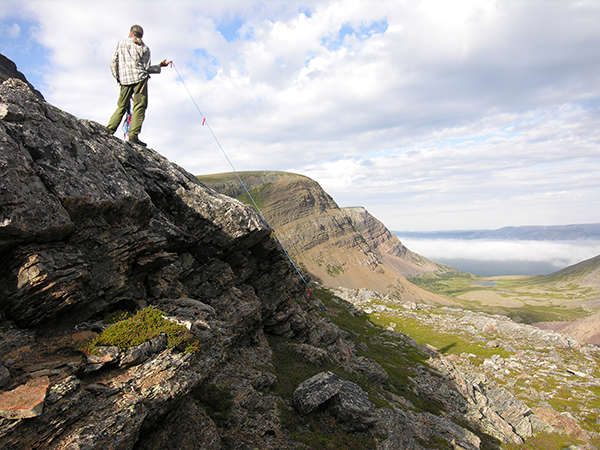
Magne Høybergetmeasuring the thickness of rock layers at an outcrop in Breidvika.
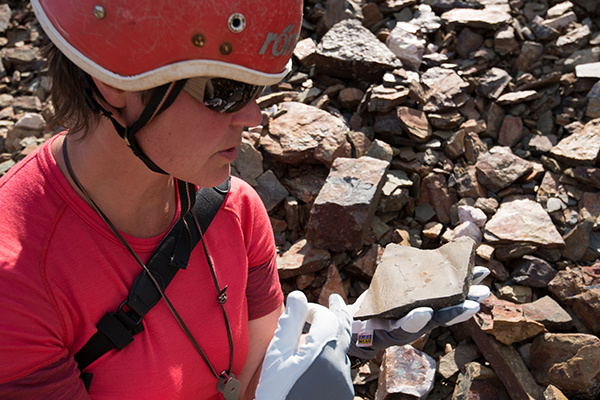
Project leader, Dr. Anette Högström (Tromsø University Museum) collecting trace fossils - in this case, the footprints of trilobites on the ancient seafloor.
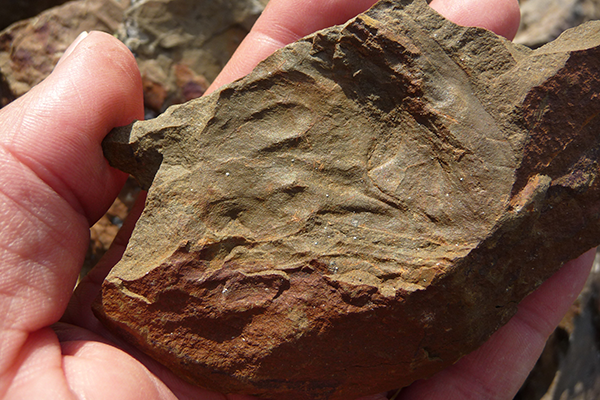
Can you see the trilobite fossil? These rocks are over 500 milion years old and the fossils can be very difficult to find.

Here is an example of the typical preservation of trilobites in the "trilobite beds" of the Doulbasgaissa Formation.
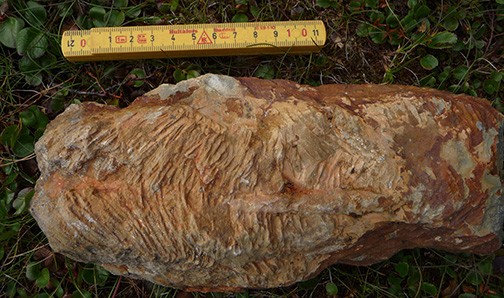
Large isolated trilobite hunting trace from the Doulbasgaissa Formation.
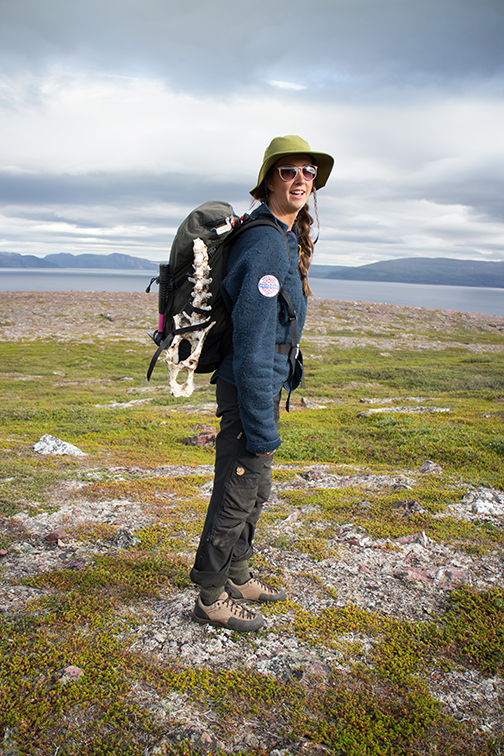
Linn Novis (Gradute student, Tromsø University Museum) with one of her more recent finds!
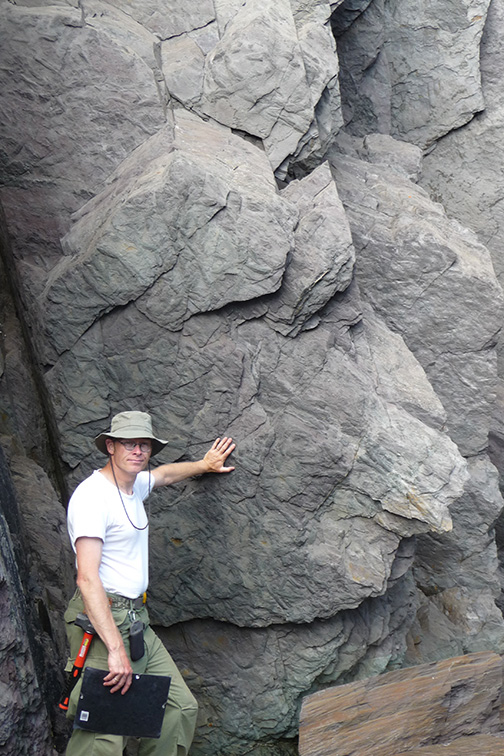
Dr. Jan Ove R. Ebbestad in front of the large trace fossil Psammichnites in the lower part of the Lower Cambrian Breivika Formation. This part of the section exhibits roughly 100 m of Psammichnites covered surfaces.

Close up of large trace fossil Psammichnites in the lower part of the Lower Cambrian Breivika Formation.

Project leader, Dr. Anette Högström (Tromsø University Museum) posing with Ediacaran fossils from the Stappogiedde Formation north of Manndrapselva.
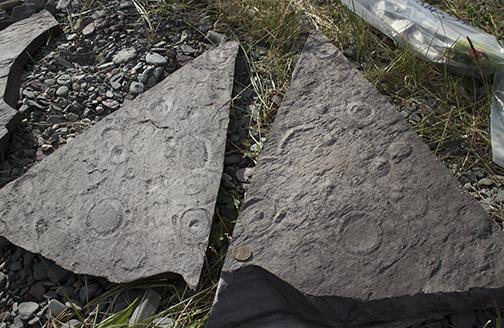
Slabs with abundant Aspidella fossils from the Ediacaran Period (560 million years ago) from coastal sections south of base camp at Manndrapselva.
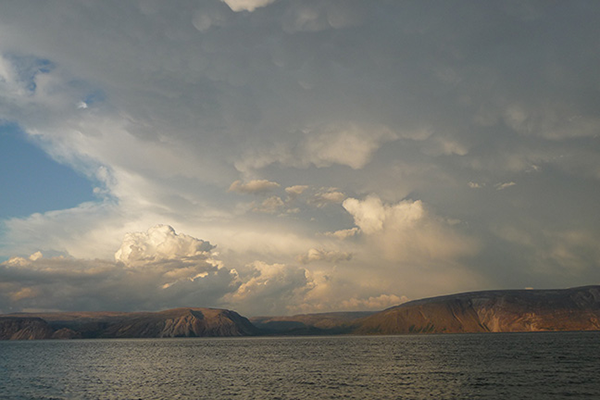
The Varanger Peninsula across Tanafjord below a dramatic pre-storm sky with mammutus clouds.